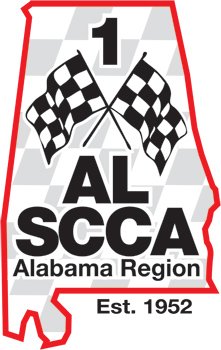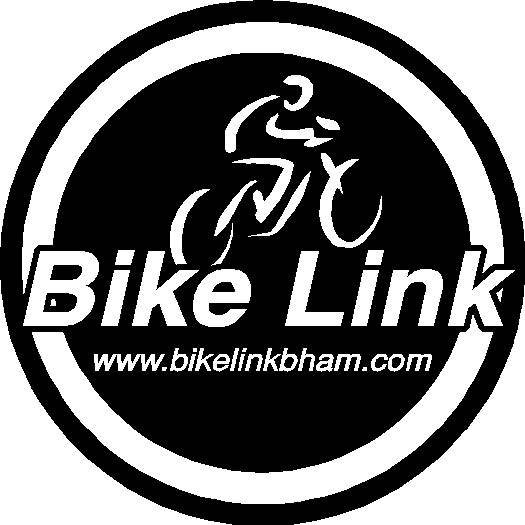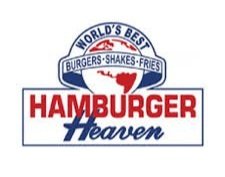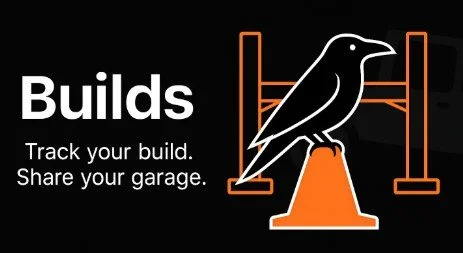Lee Clark with the 1964 Ferrari F158 that John Surtees drove to the F1 World Championship. Photo: Mike Wenning.
In Conversation with Lee Clark
The ALSCCA recently had the opportunity to interview Lee Clark, the long-time Restoration Manager for the world class Barber Vintage Motorsports Museum. Throughout Lee’s 31 years volunteering and working at the museum and track, he’s had the opportunity to work on some very special cars and motorcycles in the collection. The interview was conducted at the museum by ALSCCA Member of the Board, Mike Wenning, on February 4, 2025.
February 4, 2025. Leeds, Alabama.
What was your job title at the museum?
Lee Clark: My last title before I semi-retired was manager of the restoration department and the Lotus race car collection. I’ve been here 31 years. I started downtown in the old building. It was great. It was a different era back then. We were still obviously a large collection, but a small group. We didn’t have 800 acres and a racetrack to take care of, and this palace.
To have this “crown jewel” here is unique.
Lee Clark: When we started this project, I was the one that took on the track side of the design. Alan Wilson and I worked on the design together. I was the boots on the ground for him.
Mr. Barber mentioned that John Surtees and Dan Gurney also had some input.
Lee Clark: John Surtees actually came here after it was done. The first time I went to the Goodwood Festival of Speed, I went with John. I took the plans for the track and showed them to him at his breakfast table. It was still in the design phase at that point.
How did you get started in the restoration work?
Lee Clark: From 1983-93 I owned a machine shop in downtown Birmingham, Piston Ring Service. Before that I was a banker. I left that world because I had always tinkered on cars. My first car was an MGB and I had to learn how to fix it. My wife also had an MGB. I started going to Piston Ring Service to have my car work done. I finished college, and went to work for Central Bank, which was right down the street. I would have lunch there with Dave, the owner of Piston Ring Service. One day when Dave was getting close to retirement, I asked him about his plans. He said, “Lee, when I turn 65, I’m going sell this place to you.” I immediately said “DEAL!” So, I left the banking world and owned Piston Ring Service for 10 years. I worked my tail off. I did a lot of Porsche, BMW and Mercedes work in town. We worked on everything from Ferraris to forklifts.
I was hardly ever home. My wife and I had two children at that point, and we decided that the best thing at that time for our family was to sell Piston Ring Service. So that’s what I did.
I had been doing some race car work for the Barber Collection. I volunteered, and I just never left. They invited me to go to Steamboat Springs with them as a volunteer. They asked me to set up a machine shop. Eventually I managed the vintage motorcycle race team and did machine work. Then the track came along, and I got involved with that. And then we started seriously collecting cars around that time. They asked me to work on the Lotus race car collection. Once the track got to a certain point I came back in the museum and was doing machine work. Then I built the motorcycle and car restoration department and did that for 10-12 years. I turned 65 and wanted to semi-retire and cut back to working a couple of days a week, and now I’m back to working four.
Well, that’s understandable.
Lee Clark: We have some cool projects. After my semi-retirement I had a little farm, and I was taking naps in the afternoon, and I got bored.
Have you ever autocrossed?
Lee Clark: Yeah, I did a little bit, but I couldn’t afford to keep up with the tires being a kid in college. It was a good car, but it was also my transportation. Then I got married and had kids and all of that just got put on hold. And when the kids each decide to get two degrees… (laughing)… one graduated from law school and one from business and engineering schools. My wife and I figured the best thing we could do was to educate our kids so that they could earn their own money.
It’s been a great road for me, and I pinch myself for being involved with this organization for that long. Mr. Barber is a fabulous man.
I’m on the ALSCCA Board and I called Mr. Barber’s office about setting up an interview. I figured he has a gatekeeper, so I left a voicemail. About two hours later, I got a call, and it was from Mr. Barber. We conducted an interview with him, and when discussing Goodwood, he put me in touch with you.
Lee Clark: Mr. Barber attended Goodwood in 2004, when it was the 40th anniversary of John Surtees’ F1 World Championship. We brought the cars this past summer to Goodwood to celebrate the 60th anniversary.
How did you get your restoration skills? On the job training?
Lee Clark: Growing up. I’m heavy on the engine and drivetrain side, and I had my own machine shop, so I had a lot of experience with MG’s, Triumphs and Jaguars. I had a 1972 MGB. Then I owned an Alfa. The MG never stranded me. It would nickel and dime you to death, but the Alfa with that mechanical SPICA injection, it was problematic, so that’s how I learned to work on it.
When I owned my MG, that’s when I learned the term “Prince of Darkness” for Lucas Electronics.
Lee Clark: The English don’t get that joke. (laughing)
What was you most challenging restoration?
Lee Clark: On the bike side, probably with Chuck Honeycutt doing the wrenching and me helping with the machine work, our AJS Porcupine or E95. We have two of them. One complete bike and one motor, so we built a car out of the motor. And we took it to Pebble Beach and won. Chuck was the best mechanic or tech we ever had.
On the car side, our Lotus 10 with a Connaught motor. Just finding a Connaught motor was a challenge because most of them came with a Bristol motor. The Connaught was a real challenge with that pre-select gear box.
The Lotus cars belonged to David Whitesides. He passed away and we ended up with his five Lotus cars. With the Lotus 10, I loaded up every piece of it by hand into the back of my truck. The chassis only weighed like 80 pounds. So that was interesting.
The Ferraris we had restored, both the original and the replica. Our Ferrari 158, chassis number six, was one of the two that John Surtees drove to win the 1964 F1 World Championship. We found it through a Lotus connection. I was taking our Lotus cars over to Road Atlanta and I met Pete Lovely, who owns a Lotus 49. He was a Lotus F1 driver. He said he knew a guy who was helping Jacques Setton sell some of his Lotus cars, including the Lotus 49 R6. This was David Felter, a Texan, who presented us with information on two cars: the Lotus 49 R6 and the Surtees Ferrari 158. The Lotus was actually a little more money. Mr. Barber bought the 158, and it has been here in the collection for more than 20 years.
So, the Ferrari was found really by happenstance.
Lee Clark: It’s all about connections, really. It’s all about people. There was really not much internet connection back then. The car had been sitting in Jacques’ villa in Switzerland, and it was pretty much as it was last run. We had it restored by Sport Auto. When it was restored, they made new castings for the wheels and uprights which were magnesium. We recast in aluminum and put the magnesium original parts on the shelf for history. We started acquiring more bits and had enough to build a second car, the blue and white one. It’s a replica, but it has more original parts on it than many restorations. The 158s in the day were the only factory F1 Ferraris to ever race in any color other than red. Ferrari had been caught cheating on the 250 LM and he was supposed to make enough to homologate them, like 33, and the FIA reps were in front of the factory, and he would take them back and change the chassis plates because he didn’t want to race it as a prototype at Le Mans.
John Surtees would tell you that even in his day, early 1960s, for Ferrari, the big prize for them was always Le Mans, because it helped sell street cars. The F1 program had to wait until Le Mans was over, before they got serious about the season. And back then in F1 they only had 8 or 10 races. When Enzo got caught, and the FIA said you can’t race it as a production car, Enzo said he was pulling out of all racing, including F1. At that time John was pretty far along by the time that it had all come down on Ferrari. John and Jimmy Clark were really close in the championship. And the last two races were Watkins Glen and Mexico. So, Ferrari said he would loan them to the North American Race team, so that’s why they got painted white and blue. Back then, you typically raced in your country’s colors. And then in 1965 they went back to red. That car raced in 1965 and a tiny bit in 1966, not with John. We decided to build one in white and blue. Both cars have been to Goodwood, in 2004 and in 2024.
The model number is F158?
Lee Clark: Yes. And they had a total of six cars, two were 6-cylinder cars. The “15” is because it was 1.5-liter displacement which was the maximum limit. They had two 156 6-cylinders. They had two 158 8-cylinders. And they had two 1512, 12-cylinders. Surtees wanted the 12-cylinder but Lorenzo Bandini, being Italian, got first choice of those. But the 12-cylinder ended up being too heavy. John used the F158 for three quarters of the season that year.
When we found it, John had been looking for it. We had met John in 1994 when we went over with one of our bikes to one of his events, and he became a friend of the museum. When we heard about the car, Mr. Barber called John and asked if he could go check it out. John went to see it in Switzerland and knew it was his car, instantly. I’ll show you on the car that John was a small guy, but he had wide hips. You can see where they took a hammer and made scallops where his hips would fit. And those hammer marks are still in the original car. That was such an important car, and we worked on it with the factory’s guidance. I got to go over and meet those guys, and we tested it in Fiorano.
Do you have a favorite car here at the museum?
Lee Clark: I guess I’d have to rank it by decade or genre because it’s hard to compare a Formula One car to a road car. Obviously, the Ferrari means a lot to us, you know, because John Surtees was the only man to win the World Championship in both motorcycles and cars and we have one of the MV Agustas and one of the two Ferraris. The other F158 has not shown up anywhere, so we may have the only surviving 8-cylinder car.
I’m a big fan of the Lotus cars. We have the world’s largest Lotus race car collection. Clive Chapman is a friend of the museum and a friend of mine. I love the story of what Colin Chapman did with very little after the war. I love their spirit. The Lotus 11 – that’s just a wonderful car. It’s a 1956. I got to drive our Lotus 102B, which is a later F1 Lotus introduced after Colin Chapman had died. Driving a F1 car was a real thrill. It has a 3L V8 in it with close to 500 horsepower. Handling-wise it reminds you of a big, powerful go-kart. It’s really hard to say just one favorite car from the collection.
On the bike side, I would say the MV Agusta. I look at them, and they remind me of the Ferrari of motorcycles. They have that same Italian look to them. This is what John Surtees won the Grand Prix motorcycle World Championship with.
In terms of having a favorite, Mr. Barber is asked this question often, and it’s like having to choose a favorite child. It’s hard to say.
Do you have any current projects that you’re working on?
Lee Clark: Yes. I’m working on, or project manager for, three replica Le Mans Porsche cars: a 906, a 908 Spyder and a 908 Coupe. I’m also restoring a 1962 Super 90 Porsche, which was like one of Mr. Barber’s first race cars. We want to bring it back to what he had.
I’m also overseeing a project we have in the Netherlands, a Ferrari 250 LM replica car. We’re also working on another famous F1 Lotus that we aren’t ready to put the details out on yet. So, at the moment I have six or seven cars going.
What was Mr. Barber’s last Porsche race car?
Lee Clark: It was a Porsche 904.
How many times have you been to Goodwood?
Lee Clark: I don’t know. Probably at least a dozen times. We do the Goodwood Festival of Speed about every other year.
Describe Goodwood from your perspective.
Lee Clark: Lord March, now the Duke of Richmond, I met through John Surtees. He is a true motor sports enthusiast and gentleman. The Goodwood Estate is massive, 11,000 acres, and I’m sure it is expensive to maintain. Unfortunately, you have seen many of those large estates go away because of taxes. His first great idea was to host a Hill Climb. His next great idea was to have it on a weekend that was not a Formula One race. He would invite six or eight teams to bring last year’s car. The average guy can get very close to these F1 cars with a Goodwood ticket. It's about 100,000 people that show up each day, and it’s unbelievable. Of course, with all the cars there from around the world, I think it’s the best vintage car event of the year. It’s amazing. They’ve been doing it for 25 years.
There are actually two events each year there, The Goodwood Festival of Speed and the Goodwood Revival. The Revival is a period dress up event combined with road racing. I’ve been to it seven or eight times.
Last year I prepared the F158 original car and the replica for Goodwood. We flew the original car, and the replica had to be on the boat by May. We put it in a steel cocoon type of container. I spent six weeks last summer in England with the cars.
Tell me about John Surtees.
Lee Clark: John came to Sebring in 1993. Like a lot of F1 drivers, they are a lot like fighter pilots. Intense and focused. In his later years he was very approachable. He would sign autographs for hours. One year I was on the road with John for about 13 weeks. John was always about keeping fit. We were fortunate to stay at his house, and he’d cook a good breakfast for us. Even in his later years, he was a fast walker. He could probably still fit into his original racing uniform.
What’s it like to drive a Formula One car on track?
Lee Clark: I didn’t drive until we had our track here. I started racing in go-karts. The track is a for-profit subsidiary of the museum that serves to support the museum. Our premise is to use the track to demo and develop our stuff. So, once the track came along, I got to start driving the cars. Mr. Barber also reminds me that these are old race cars, and they don’t necessarily have seat belts. That keeps me from going too fast, especially in the corners. I drove the 102B and you’re in a carbon fiber shell with brand new stuff, and you feel you can drive it a little harder. I’ve driven the Surtees Ferrari a bunch, testing it. Sometimes on our track I would drive one of our F158s and John would drive the other.
Old race cars are really kind of simple. No electronics. And that original car has been here for 20 years, and it still runs. It is time for it to be refreshed, and we’ll do that after I get through these Porsches.
Have you phased out the Restoration Department?
Lee Clark: We’ve had a change in direction. When I retired, restoration continued for a while. Brian Case came along, and we closed the restoration department to focus more on conservation. We’ve got a lot of bikes and motorcycles sitting here that we take care of, but sometimes the rubber turns to molasses again. We’re going to focus more on taking care of what we have.
Do you have just as much in storage as you do on display?
Lee Clark: I don’t know the official number, but it is well over 1,700 bikes in the collection and about 1,100+ are on display. There are probably 1,400 bikes that are ready to go on display at any one time. Brian just got back from Las Vegas and bought 24 motorcycles. It’s a big place. It’s easy enough to restore paint and upholstery, but we really pride ourselves on making sure that our restorations are as mechanically sound and as good as the finished bike looks. We keep about a dozen bikes and about half a dozen cars wet, with oil and gas in them.
Anything else you’d like to add?
Lee Clark: I’d like to say that Goodwood has been great to us. We love to support them. They also help us get the word out about the museum, and what we do.
The ALSCCA would like to thank Mr. Lee Clark for this conversation, and for his generous time during our visit. For more information on the Barber Vintage Motorsports Museum and to plan your experience, please visit barbermuseum.org.


















